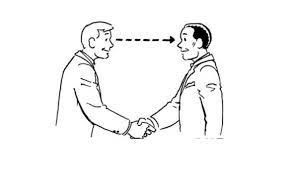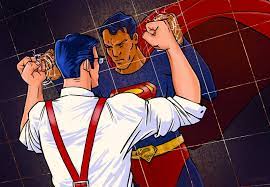Have you heard about miming? It is a technique of expressing an idea or mood of a character entirely by gestures and body movements. Non-verbal communication is expressing our messages through hand gestures, facial expressions, etc... Here is some important non-verbal communication that everyone should know.
Eye to Eye contact
Children notice what we do, even more than what we say. Eye contact is one of the most powerful nonverbal communication. When you make eye contact with people, you are engaged in the conversation and interested in what they are saying. Imagine how powerful when you kneel down in front of your child, look her directly in the eye, smile, and in your warmest tone of voice and say "I love you".
Non-verbal communication teaches children about connection, feelings, and the words that go with them. If you are looking at the ground it shows that you are not interested in the conversation.
Making eye contact with children makes it feel more comfortable for them to communicate.

Create an alter ego
If you need to give a speech or presentation in your job or college, but hate public speaking or fear the stage, form an alter ego who is an amazing public speaker with powerful body language. You have the capacity to switch into the mindset whenever you want but can still return to your normal self after giving your speech. Sometimes you need to create an alter ego to build up communication skills.

Tone of voice
Your tone of voice is also a powerful non-verbal tool. Try saying a simple sentence "I can't help you" emphasizing a different word each time. Even inoffensive sentences can become poisonous if you chose a different tone of voice.
It is the way you say something rather than the words you use. Especially children are more sensitive to this type of non-verbal communication.
Body movements and Gestures
Non-verbal communication includes our stance, posture, and subtle movements. You can learn to read people's body language by noticing their hand gestures, leg movement, and stance.
Different gestures could mean different things in different situations. Every hand gesture means something. Most of us knowingly or unknowingly use certain gestures such as thumbs-up and high-five during regular conversations.

Facial expressions
Our face is extremely expressive, able to express numerous emotions without saying a single word. Facial expressions are universal. We can see that all people express their emotions like happiness, sadness, anger, etc. are same across cultures.
From our lip movement to our eyebrow-raising our facial expressions convey a wide range of emotions. Facial expressions are very powerful.
Even a smile makes any situation easy to handle.
Touch
Think about the messages we can communicate with touch like a firm handshake, a pat on the back, a warm hug, etc. We communicate a great deal through touch.
Jack is curled up on the bed under a blanket, suffering from a high fever. Dad walks by and adjusts the blanket, and gently rubs Jack's hair. Has anything been communicated? Chances are Jack knows without words that his dad cares about him. And it makes him feel comfortable.
